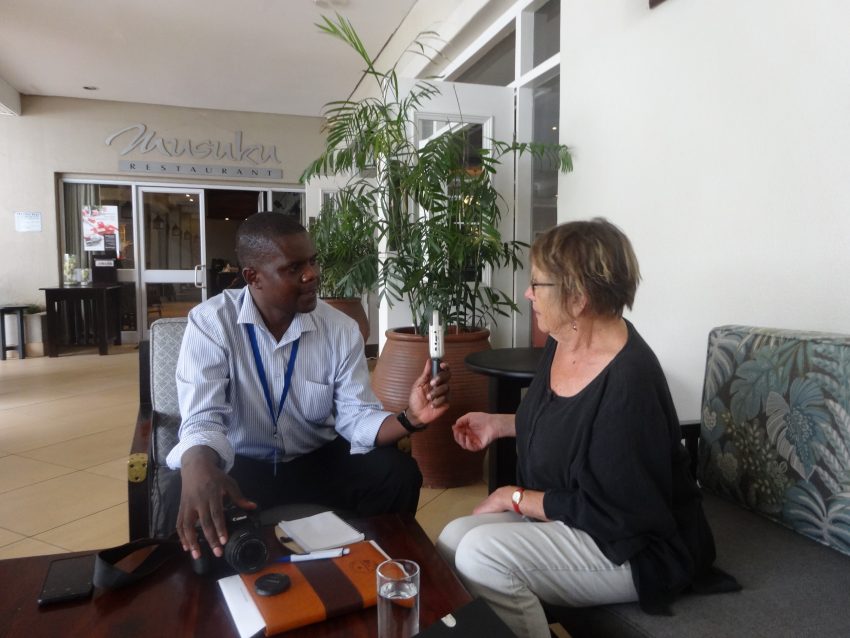Disembarking at Cairo, we were confronted with an enormous billboard welcoming delegates to the COP27 climate conference. 40 000 delegates were meeting to discuss, among other things, the painful question of financial responsibility for fixing the climate crisis caused largely by the activities of developed countries.
Visiting Egypt was a long-held dream. It was wonderful for many reasons, not least of which is our brilliant Egyptian guide Mohammed Ali who explains and inspires in equal measure. However, exploring the ancient rise and fall of the Pharaohs does not shield me from today’s concerns. Rather, it amplifies the question, “When will we learn from history?” Mohammed and I talked about the Aswan Dam and the changes it has made to Nile River agriculture just as the Kariba Dam has changed the Lower Zambezi Basin. We also talked about the displacement of the Nubian villagers and compared their plight with the Batonga of the Middle Zambezi

Kariba Dam: A giant unpredictable experiment
Considering the challenges of COP27, I was reminded of my early 2020 visit to Zambia for an interview about my first book, The Shaping of Water, published some years earlier. Although Zambia is a very different African country, there are familiar parallels.
In Learning from the Kariba Dam, an article published on 22 July 2020 in The Climate Issue of The New York Times Magazine, Namwall Serpell says, “The history of the Kariba Dam is the story of a war over the past and the future of a river.” Namwali Serpell is a Zambian who has written a prize-winning book about the Dam called The Old Drift
The Kariba Dam which created Lake Kariba was one of many engineering projects built by a colonial government to serve their own interests, at a huge cost to the local and downstream ecology and population, and a financial cost which continues now as the Kariba Dam Rehabilitation Project (KDRP) attempts to repair the 80-metre deep plunge hole endangering the dam.
What follows is a repost of my reflections on that visit and the “giant unpredictable experiment that is changing the natural environment of the region”, first published on 21 March 2020:
The Shaping of Water: Returning to the past to build the future
This year (2020), I time-travelled back more than 30 years. I returned to the Ridgeway Hotel in Lusaka to the place where golden weaver birds build their nests above small sun-worshipping crocodiles. Here, there were once an excellent Zintu craft shop, a regular Zambian ladies’ lunch, an Independence Day National Art Exhibition, and gin-and-tonics on the verandah under the management of Richard Chanter.
On this occasion, I was meeting Daniel Sikazwe, journalist, broadcaster and PEN member to interview me about my novel The Shaping of Water. The Ridgeway was as pleasant as ever! As with the Alliance Francaise event compèred for me by Daniel, it was a very enjoyable interview. Daniel asked penetrating questions about the reasons I wrote The Shaping of Water, and the truth of the facts in it.
“It’s a book that should be standard reading for Zambians,” Daniel said. “It tells of a part of our history that is not known about.” And so we talked of how I came to write this book and of the problems of writing cross-cultural history as a novel.
A Scottish village in Africa

In 1972 I found myself living in Siavonga, the new township on the Zambian shores of Lake Kariba built to house the British companies constructing the North Bank Power Station.
The Zambian community lived in traditional villages around Siavonga.
There were three classes of housing for white people. Executive housing for the consultants, middle-grade housing for the engineers and their families, and terraces of single rooms for the Scottish workers from the slums of Glasgow.
The new housing was perched high above the lake on the steep rocky escarpment that once plunged vertically into the Zambezi Gorge. Reaching the lakeshore demanded a marathon physical effort in the tremendous heat of the Lowveld.
The bigotry and racism of this tiny imported Scottish community surpassed even that of the white Rhodesia I had grown up in.
Mitchell Construction despised Zambia and was busy embezzling funds provided by development agencies for their Jubilee Tube project in London. They went bankrupt inside a year and abandoned the power station.
The Queen Mother and the Colonies
13 or so years previously my first visit to Kariba had been an ordeal. My father, still deranged from his divorce, took me to see the dam wall in his Austin van. “I only buy British cars,” Dad stated. The van was burning-hot. The dirt road was crowded with construction lorries. The dust choking. Kariba North was home to Italian workers who leered at me.
The dam wall was a broken curving rampart holding back a gleaming river in dry bush. For white Rhodesians, it was triumphal proof of their power and control in Africa. The Queen Mother was to open the Dam in 1960. It was planned to cement the Federation of the Rhodesias and Nyasaland together but that political bodge was already coming apart.
Freedom fighters would soon be crossing the Zambezi valley to the sanctuary of a newly independent Zambia which supported them and the wars of liberation would soon begin.
The lakeside cottage of my dreams and my story
In spite of my previous experiences at Lake Kariba, I was to spend some of the happiest times of my life there in a small, primitive cottage without electricity. This cottage became the setting for my novel and there were many reasons for that choice.
The lake is beautiful in itself. It is, however, a giant unpredictable experiment that is changing the natural environment of the region. Every time I went there I learned something new about it and became more engaged with it.




For a time the liberation wars made it impossible to go there safely. On one occasion, the Rhodesian Air Force machine-gunned Siavonga, the hotel and bar, and the nearby village killing women and children. These were hard times for Zambia, a Frontline State, which hosted the ANC and ZAPU armies.
My early life, my education, and my experiences in South Africa made me a supporter of African freedom but I had yet to learn of the displacement of the Tonga people of the Zambezi Valley. That story about the Tonga people, researched by Professor Elizabeth Colson, would become an essential part of my novel about Lake Kariba.
A novel about displacement and war and ordinary people
My novel has neither heroes or villains. It’s about ordinary people caught in extraordinary times who mostly try to do the right thing as they see it. It’s not about the famous people who, we are told, shape history.
It’s about how history shapes us, maybe deforms us, maybe makes us, but also about how even if we are displaced we cannot escape our shaping.
It is about how the great Zambezi river was trapped and reshaped into a huge dam and how that immense volume of water continues to shape the land and to shape the people who live around it and who depend on what it provides.



